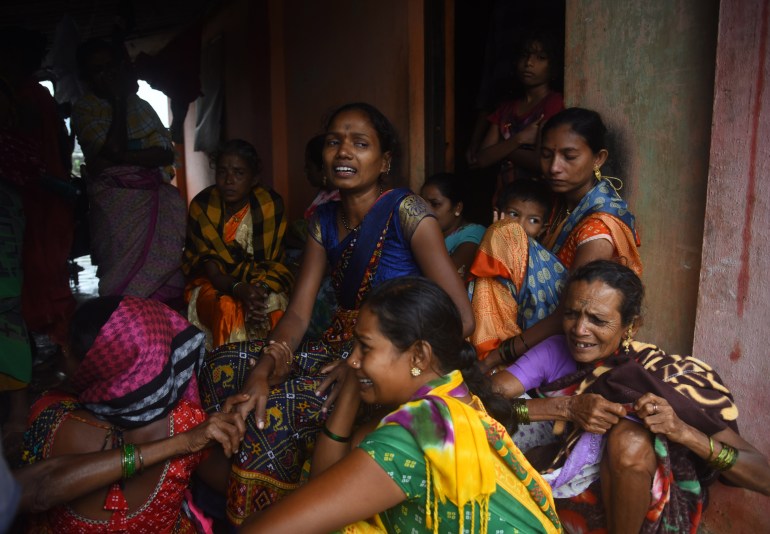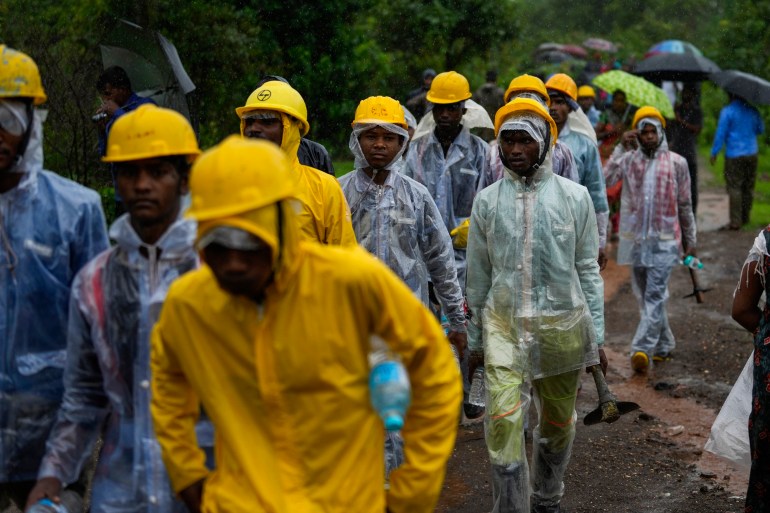Dozens are still unaccounted for since the landslide hit Irshalwadi village in Maharashtra on Wednesday night in Raigadh district.
Seventy-eight people are still unaccounted for since the landslide hit Irshalwadi village on Wednesday night in Raigadh district, nearly 80km (50 miles) from Mumbai, the Maharashtra state capital.
At least 17 of 48 houses in the village were fully or partially buried under the debris, officials said.
“We’ve so far counted 27 bodies, and about 50 to 60 people are still missing, but there are multiple challenges for rescue work at the site,” Raigad official Yogesh Mhase told the AFP news agency on Sunday.

The hilltop location and tough terrain were hindering efforts, officials said.
“We are facing the huge challenge of not being able to carry heavy equipment, which is why everything is being done manually,” Rescuers were mostly using rods and shovels,” Pramod Kumar Singh of the National Disaster Response Force (NDRF) told local media outlet ANI.
From the base of the hill, it takes about 90 minutes to reach Irshalwadi by foot. Rainfall and a threat of more landslides caused the rescue operation to be suspended during the night, the rescue agency said.
The dead included four children, the Press Trust of India news agency said, adding that 75 people have been rescued. Four people have been hospitalised.
India’s weather department placed Maharashtra under alert as the state was lashed by incessant rains the past week. Local train service was disrupted at several places, with water flowing inside stations and over tracks, media reported.

Record monsoon rains have killed more than 100 people in northern India over the last three weeks, officials said, as the downpours caused roads to cave in and homes to collapse.
India regularly experiences severe floods during the monsoon season, which runs between June and September and brings most of South Asia’s annual rainfall. The rains are crucial for rainfed crops planted during the season but often cause extensive damage.
Scientists say monsoons are becoming more erratic because of climate change, leading to frequent landslides and flash floods in India’s Himalayan north.
